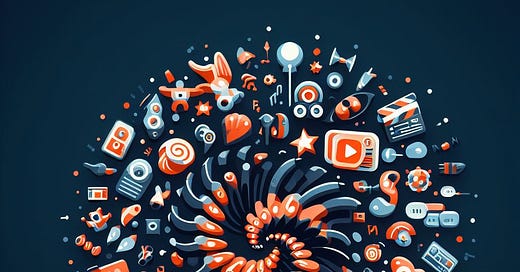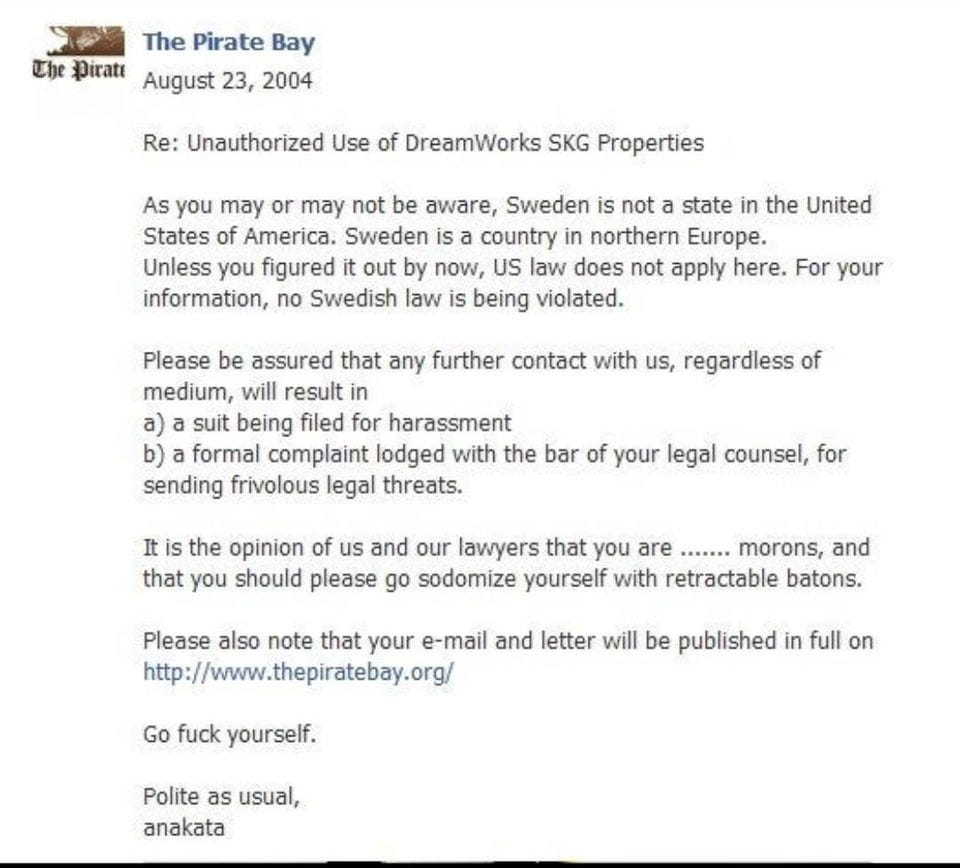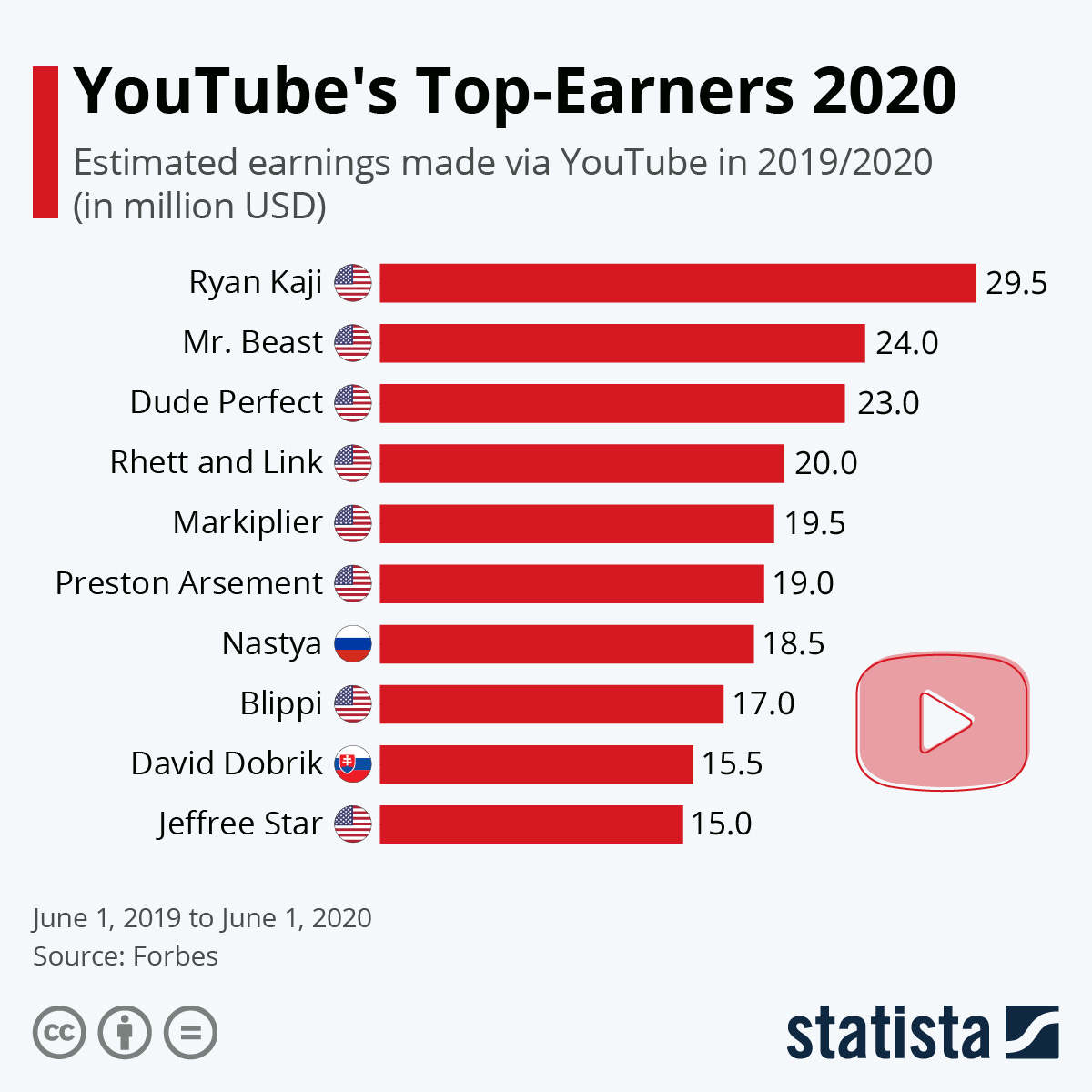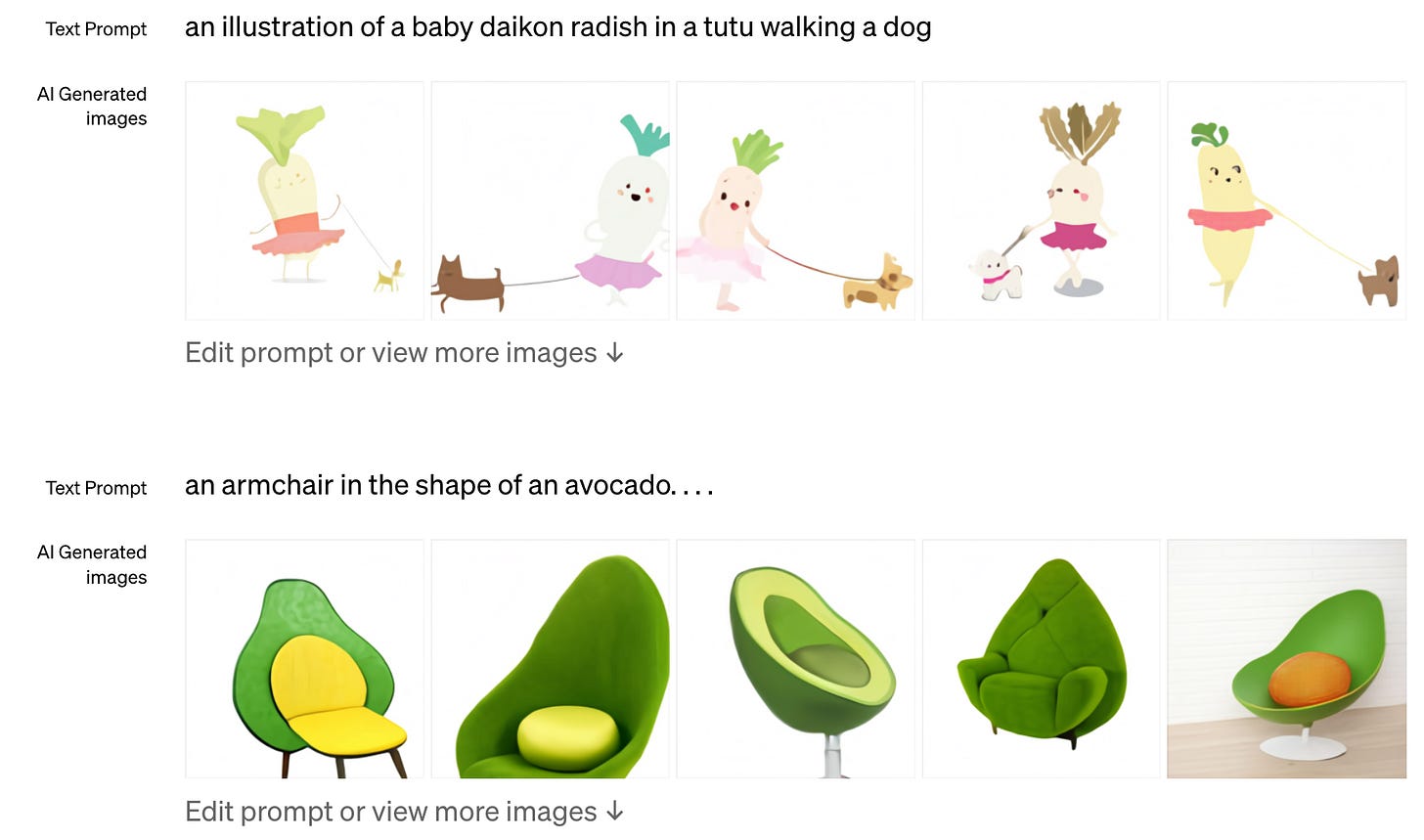Wither Hollywood
The unit economics that AI will bring to Hollywood will inevitably cause it to reduce in influence.
Technology and Hollywood have long maintained an intricate relationship. The inception of Hollywood itself was influenced by technological constraints from film-makers trying to get away from Thomas Edison’s patent collection agency the MPCC, removing the monopolistic grip he had over film and allowing independent art to flourish thanks to the unfettered use of this (now ancient) technology. Since the dawn of the new century, Hollywood's approach to distribution mediums has echoed the controlling tendencies of the MPCC, rather than the innovative spirit of its pioneering founders. AI, combined to a lesser extent with other cultural trends, offers an idea that will eventually reduce its power over the means of production and force the medium to become more decentralised and therefore the institution of Hollywood less relevant.
Distribution
Tech’s most obvious impact on Hollywood so far has been the change in the way it distributes its content.
Piracy
As the internet gained popularity, many quickly recognized that it could be used to distribute files containing rich media (such as music or film). Given how much these cost at the time it was a very tempting proposition for regular people to obtain these works for free through the medium of piracy. Digital files also represented a break from the cost of format upgrades and would theoretically last forever. Needless to say the entertainment industry wasn’t too pleased with this and began using its enforcement wings (the MPAA and the RIAA) to litigate against individuals with intense ferocity to scare broad populations.
Music was more affected from this due to its information density, a 3 minute song could be compressed with great quality to about 3mb, while movies at 1.5 hours would compress to about 700-800mb with a noticeable reduction in quality. Their revenues plummeted due to services such as Napster.
Motion pictures didn’t suffer a similar fate at the time due to their information density, but they knew it was only a matter of time before they did, what was holding back that tide for them was the progress of broadband and storage, because if eventually if the difference for the consumer between downloading and storing a song and a movie was relatively small then they would be in a similar position. While the RIAA had to fight the more immediate battles against the freeloading consumer the MPAA could use their time advantage come up with more upstream solutions and for that they turned to technology.
The recording industry couldn’t force a new format on consumers that didn’t take their current downloads into consideration because it would flat out not be adopted, and relying on a new format to save them wouldn’t necessarily work because CDs were already storing uncompressed music at the rate that according to Nyquist’s theorem was equal to the range of human and did so without any Digital Rights Management (DRM), meaning there is no inherent value proposition linked to quality and very little linked to convenience.
While the recording industry was aggressively litigating to stem the tide with fear, the motion picture industry threw its weight behind the new formats of HD-DVD and BluRay, offering it not only another opportunity to extract more cash from consumers due to a format upgrade but to bake in DRM from the beginning, this had the duel effect of stemming piracy from your average consumer performing rips but also increased the information density so that a regular film was now around 4gb in total at least 4x its old size, to put this in contrast broadband speeds in America increased from 4mbps in 2008 to 18mbps in 2017, about a 4x increase over 10 years. This bought it yet more time and allowed it the enviable position of being able to observe its cousin industries experiments in this domain without committing to anything long term.
Meanwhile, the recording industry was making deals with iTunes and Spotify to experiment with the idea of selling purely digital versions of its works one with the unit economics of per product pricing and the other with all you can eat buffets for a fixed amount.
Streaming
As discussed in the TV show streaming on Netflix “The Playlist”, the recording industries Swedish foothold was completely decimated largely due to its excellent broadband services, favourable laws surrounding the dissemination of copyrighted material and its cultural attachment to The Pirate Bay (and the hilarious manner in which they told the big corporations to take a hike).
This led it to try some ideas out of desperation, one of which was allowing Spotify to serve its content for a cut of a fixed subscription fee/ad revenue. At the time the recording industry was waging a war against piracy that led it to spurn digital innovation in its entireity as a form of collateral damage, so this tactic was considered a big hail mary. As it would turn out, it worked, and over time the recording industry started growing rather than rapidly shrinking largely thanks to streaming revenues.
With this success you might be wondering why the motion picture industry didn’t fully follow suit. The truth is this success did not come without its caveats, chiefly that the labels producing the recordings lost control over its final distribution, relinquishing that to Spotify. The motion picture industry took the parts they liked from streaming, such as a reliable MRR and a low cost distribution medium, but fought back against the idea of an all-in-one streaming platform instead opting to make their own platforms (such as Disney+, HBO Max and Paramount+) and compete directly with other Silicon Valley streaming startups like Netflix.
So far this approach seems to have worked more or less in their favour, enabling them to maintain their oligopoly over the American film industry without sacrificing their control over distribution. Having the recording industry take the first leap of faith benefitted them immensley in this case.
However while building their own platforms for distribution, a different form of distribution was taking place that didn’t rely on their content for its success.
Social Media
It turned out that the formats currently used for video entertainment (in this case TV shows and movies) missed a gap that the internet filled, which was short form video content, for example the kind you might see on TikTok. YouTube gave us a format longer still that people could produce with extremely low production budgets, showing us that the gap between production quality and the amount you spend on that production lessened significantly.
These services eventually figured out that sharing revenue from ads with these creators incentivised a lot of people to create content in an economically efficient way, with some of these creators earning big money on the order of millions of dollars a year. In addition to this these creators began doing their own deals with brands netting them even more.
This is not to say that these productions are of the quality of a Hollywood movie or TV show, but it is to say that the amount you can net from low budget productions dramatically increased, making the return spread between these two content formats smaller, and the smaller it gets the less likely financiers will fund big budget productions, making them economically unattractive investments.
This cements the case that distribution costs have fallen for not just Hollywood but the world at large. With more and more creators on an even playing field, Hollywood has largely lost its battle to maintain control over distribution.
Production
Tech has always had an impact on Hollywoods production, from special effects to CGI. These lowered the costs of production but still maintained a high enough cost that these technologies weren’t immediately accessible. However, emerging technologies promise to revolutionize this by significantly reducing production costs to a point where they will be accessible to your average content creator.
Generative AI
Currently, a range of tools, like OpenAIs DALLE and Midjourney, enable users to generate images from simple text prompts. The results they produce are atonishing.
Research continues to make more and more progress in this area. Early video models are on the scene with Google’s imagen video.
Obviously these are still a very far cry from a Hollywood production quality video, having said that consider the amazing amounts of progress text to image models have made over the short space of a couple of years. There is no reason to believe similar progress won’t be made on videos, after all they are just a temporal form of images. While text to video may be considered the holy grail the industry has done a lot on the subproblems of video such as super slow motion and Generative Image Dynamics.
For great examples of early attempts beginning to replicate Hollywood production quality, you can check out what X user @thibaudz has been up to in this tweet. They manage to generate the face, the voice, the scenery and the lip syncing all from different models.
How soon will it be before the cost disparity between major Hollywood and amateur productions narrows significantly? With distribution already possible this is the major threat for Hollywoods dominance in this space.
SAG-AFTRA Strike
The entertainment industry and its employees can see the writing on the wall. For a good portion of 2023 the Writers Guild of America went on strike. Aside from the demands of better pay and conditions something that stood out was the demand that the studios follow careful rules around the use of generative AI. It’s obvious that labor unions have seen the devastating effects this technology can have on the means of production.
With production losing its margin, the Hollywood oligopoly can still rely on one final form of control, the maintenance and production of recognisable acting talent (e.g. celebrities), however this too is under threat.
Celebrity Status
As long as people deify the people they see in their favourite media, it stands to reason that if Hollywood continues to shepherd this talent and promote it then despite losing on distribution and production they can still maintain their edge by maintaining this stable of highly desireable talent. However, the landscape of celebrity status is evolving, its traditional definition no longer holds true and the younger generations have more in common with popular figures in newer media formats than the ones Hollywood provides.
Later Generations Celebrity Preferences
Being digital natives, younger generations often favor online personalities over traditional Hollywood celebrities, this is touched on in pieces such as “How Gen Z will rewrite the rules of fame” and “How Much Gen Z Cares About Online Celebrities in 5 Stats” where the takeaways are more content creators are carving out smaller fiefdoms of celebrity in the online world, as opposed to how Hollywood is used to operating which is annointing celebrities and making them emperors over vast swathes of celebrity.
Or how about this article from Variety where they quote Jennifer Aniston saying the following:
I’m a little choked up. I feel like it’s dying. There are no more movie stars. There’s no more glamour. Even the Oscar parties used to be so fun.
It is clear that control over this specific means of production is on its way out as social media celebrities crowd the space. It also mirrors what happened in the recording industry, arguably further down the path of democratization.
Flattening the fandoms
Spotify has long recognized that individual artists holding power over it by restricting their catalogue poses a threat, especially since Taylor Swift pulled her catalogue from the streaming giant in 2014. In order to reduce the power of these major players Spotify is interested in diversifying the artists their users listen to, and have largely succeeded. Daniel Ek, the CEO of Spotify quotes in a annual report that one of its mission is:
To unlock the potential of human creativity by giving a million creative artists the opportunity to live off their art.
Highly noble, and the implication is that more people will listen to more diverse music, flattening the outsized impact celebrities tend to have. It is reasonable to expect that the same thing will happen to Hollywood once the cost of production is lowered allowing more and more content creators to enter the space.
This would effectively remove a large moat Hollywood has around motion picture space. Given that distribution is largely solved without Hollywood, the costs of production are poised to drop and celebrity status is no longer the moat it used to be, it seems like its economic destiny is sealed. Its not entirely bad news though, in fact theres a rather exciting event to look forward to.
Cambrian Explosion of Content
The only way Hollywood begins to wither is the introduction of large amounts of content, while most of it will be poor quality the sheer volume of it will ensure that probabilistically there will be some absolute gems in this mix. More content will made from more different perspectives, diversification will be key and representation will be the norm. Previously the military-entertainment complex has sought narrative control over Hollywoods movies, and would no longer be able to exercise this control in a world where everyone is their own director.
Personally I can’t wait for a world in which this explosion of content breaks free from the small overton window of Hollywood to a wider world of perspectives and experiences. I can’t wait to be my own director and riff on my own movies, they will probably be terrible but the process would be fun. Finally, I can’t wait to be surprised by art that isn’t targeted at the broadest possible market to make the maximum amount of dollars.












